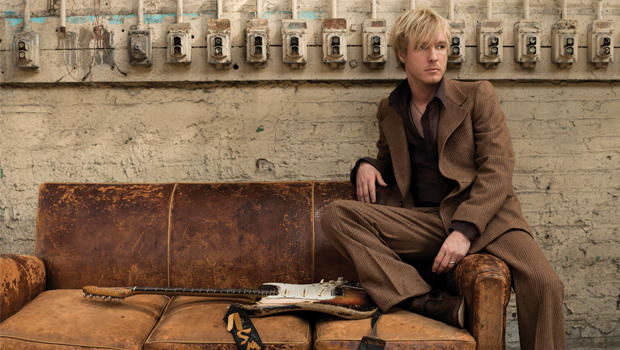The Quest For Ultimate Tone, Part I: Guitars

To me, the search for the ultimate tone is a two-way street. I can totally relate to all the guitar players out there who are frustrated by trying to get a monster tone.
But, then again, I don't think getting a killer tone is as mysterious and elusive as many guitarists seem to think. It's a fact that the very sound of your guitar says a lot about you as a player, and for that reason, every guitarist strives for the best tone he can possibly get.
But, just as everyone has their own unique personality, everyone's idea of God-given tone is different.
When I'm out on the road, I get to see and hear a lot of guitarists, and many of them complain that their tone is either too distorted or not distorted enough, has too much bite, not enough bite, or whatever. The list goes on and on! And I know how they feel, because when you're up there on stage and you're not digging your tone, you're not going to have a good gig.
There are some real simple things you can do to get a better tone. Of course, my views reflect the search for the kind of tone that I like the best, not necessarily the kind of tone that another guitar player is looking for. For obvious reasons, the tone that I go for is similar in many ways to the tone Stevie Ray Vaughan is associated with. I love the sound that he used; for blues, I think it's the best tone there is.
Let's start with the first thing in the signal chain: the guitar. My favorite guitar is clearly a Fender Stratocaster of the vintage variety. The best tone I can whip up always starts with my Strat. I think that any guitarist who can afford a vintage guitar should put that high up on the priority list. The guitar's neck is one of the most important elements of a good axe.
I prefer rosewood fretboards over maple, because it yields a warmer, sweeter tone. Maple sometimes sounds a little too bright for my taste. I also prefer rosewood for playability; it feels faster to play on, because, from the years of use, the wood has the hand oils worn into it. Maple boards usually have a heavy polyurethane finish on them, which tends to slow me down a little. But I do like maple necks for certain things; if I was going to play a slow, laid-back tune, I might use a maple neck. I also tend to play slower vibratos on a maple board, so that is a factor, too. For recording, I use maple necks fairly regularly in order to get a slightly different sound. Live, though, it's gotta be rosewood.
All the latest guitar news, interviews, lessons, reviews, deals and more, direct to your inbox!
The wood of the guitar's body is also a major factor. These days, because of the scarcity of good, aged wood, new guitars are usually made of young, softer wood. This is not generally the case for custom-built guitars, but it is certainly true for production-line guitars. The wooden body of an old guitar will be uniformly dry, and will consistently yield a better, more even tone. Then there is the question of the type of wood. Old Strats are usually made of swamp ash or alder. My old Strat is alder, which I prefer, again because it sounds warmer to me.
The finish on the bodies of vintage guitars also plays a role in the tone. The finish on new guitars is very thick, and it takes many years for the finish to cure completely. Old guitars have thinner, harder finishes, and I think this is a significant factor in why vintage guitars usually have a livelier tone. The wood tends to resonate better, which results in a better tone all around. Another big issue with me is frets. I use Dunlop 6100's (the biggest frets made) on all of my guitars. They are real tall and wide.
I need frets this big in order to support the heavy strings I use, which are, from high to low, .012, .014, .018, .028, .038, .058. But I'm thinking about going up a gauge on all of them! There is no way you can play on strings this heavy if you've got vintage Fender frets in your guitar neck. Vintage frets are way too skinny and small, and you'll break your fingers trying to get a sound! My fingers seem to be holding up fine, but I'll tell you one thing about using strings this heavy: you have to play every single day. If I don't pick up the guitar for even one day, it's a bit of a wrestling match the next time I play. As long as I play every day, and keep the calluses up, I'll stay in the groove.
Tuning down one half-step (low to high: Eb Ab Db Gb Bb Eb) helps compensate for the heavy tension of such large strings. I also like to use high action because, in combination with high frets, you can get a real good grip on the string without getting too much friction from the string riding hard on the fretboard.
There's something special about the combination of these three ingredients-heavy strings, giant frets and high action-that creates a very specific, very big sound, which is essential in achieving the tone I look for. A lot of guitarists like to experiment with different types of pickups. There are zillions of replacement pickups available these days, and it's tempting to try them. But I've never been one of those guys who switches pickups every other day. I like the sound of good, vintage-style Fender Strat pickups, and that's pretty much what I stick with.
The Fender Custom Shop has given me some special pickups, but, ultimately, I think they just sound like good-quality vintage Strat pickups.
